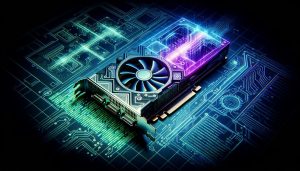RAG, or Retrieval Augmented Generation, bridges natural language generation with information retrieval to elevate AI text generation. It uses vector embeddings to retrieve relevant documents, ensuring context-aware and updated information in AI-produced text. RAG also cuts down on hallucinations, enhancing linguistic accuracy. Compared to fine-tuning, it dynamically enriches responses without the need for constant retraining. Its effectiveness is measured by context relevancy, faithfulness metrics, and nuanced understanding of its data categories. However, this summary just grazes the surface. Learn more about how RAG is revolutionizing our interactions with AI, if you wish to go deeper.
Table of Contents
Understanding Retrieval Augmented Generation
Diving right into the complexities of modern AI, Retrieval Augmented Generation, often referred to as RAG, ingeniously marries the strengths of natural language generation with the precision of information retrieval, setting a new benchmark for accuracy in the field. This revolutionary approach minimizes hallucinations in text by integrating real-time data retrieval. By ensuring linguistic soundness and contextual relevance in generated content, it offers a more reliable, efficient alternative to traditional language models.
The cornerstone of RAG's effectiveness lies in its ability to provide up-to-date and contextually accurate information. It's not just about understanding language, it's about understanding the world, in real time. It's about creating a text generation model that's capable of more than just regurgitating stored data. It's about building a model that comprehends, adapts, and generates content that's as accurate and relevant as possible.
But what sets RAG apart even more is its efficiency. Unlike traditional models, it doesn't require retraining for every new query. This might seem like a minor feature, but in the fast-paced world of AI, where time is of the essence, it's a game-changer. It simplifies the process, saves resources, and most importantly, it liberates us from the constraints of conventional language models.
Working Mechanism of RAG
Let's explore the intricate workings of RAG, a system that uses vector embeddings to retrieve relevant documents based on user queries, guaranteeing that the generated text is enriched with current and verifiable data. By combining large language models with information retrieval, RAG guarantees accuracy and contextually relevant information.
RAG operates by embedding user queries into a vector space. This process involves converting the text of the query into a mathematical representation that can be processed efficiently. Through this, RAG can swiftly sift through vast databases, finding documents that correlate with the query.
But RAG doesn't just stop there. Its system goes a step further, using the retrieved documents to provide a context for the language model. Essentially, it's as if the language model reads the documents and uses the information to generate a response. This approach minimizes hallucinations in generated text, which is a common problem in many language models, by enriching it with current and relevant data.
What makes RAG even more revolutionary is its ability to enhance text with up-to-date information without having to retrain language models. This feature saves considerable time and computational resources, making the system more efficient and sustainable.
Most importantly, RAG promotes transparency and trust in decision-making processes. By ensuring that responses are grounded in verifiable sources, it liberates users from doubts and uncertainties, fostering confidence in the generated information. This unique working mechanism makes RAG not just a tool, but a game-changer in the domain of language models.
Impact and Applications of RAG
Understanding the impact and applications of RAG reveals how it's reshaping the landscape of data retrieval, promoting accuracy, relevance, efficiency, transparency, and user trust in AI-driven processes. A closer look at RAG's impact shows significant strides in enhancing accuracy. By updating responses using the freshest data available, it guarantees the precision of information dispensed.
RAG's relevance is apparent in its ability to access specific databases. In an age where customization is key, this feature provides tailored answers from organizational or industry databases. Such specificity guarantees that RAG's output aligns with the user's context, amplifying the relevance of the retrieved data.
Efficiency, another core benefit of RAG, is evident in how it harnesses real-time data without necessitating the retraining of language models. This feature saves time and increases productivity, making RAG a game-changer in an era where speed and efficiency are paramount.
Transparency isn't often associated with AI, but RAG is changing that narrative, too. By fetching and presenting data from verifiable sources, it puts users in the know about the origins of information, fostering transparency in the process.
Lastly, RAG fosters user trust. Users can understand the AI's decision-making process through contextual data retrieval, increasing their confidence in the system. It's not just about providing answers, but also showing users how those answers came to be.
From these insights, one can see how RAG's impact and applications are revolutionizing data retrieval. By cultivating accuracy, relevance, efficiency, transparency, and trust, it's shaping the future of AI and information access.
Implementing Retrieval Augmented Generation
Implementing Retrieval Augmented Generation, a process that marries natural language generation (NLG) and information retrieval (IR) functionalities, can radically boost the accuracy and coherence of AI-produced text. This integration not only enhances language model accuracy, but also guarantees that the generated text is informed by up-to-date and precise information.
By retrieving contextually relevant data during text generation, RAG eliminates issues such as hallucinations, making sure that AI-produced text isn't just accurate but also coherent. This is a significant leap forward in the field of AI, as it assures that the output isn't only grammatically correct but also contextually accurate.
The implementation of RAG in models can revolutionize the way organizations interact with their users. With RAG, users can receive accurate, contextually rich responses without the need for extensive model retraining. This is particularly beneficial for businesses that rely heavily on AI for customer interaction, as it not only improves customer experience but also reduces the resources needed for model maintenance.
However, the implementation of RAG isn't a one-size-fits-all solution. It requires a nuanced understanding of both NLG and IR, as well as a keen knowledge on how to integrate these two functionalities in a way that best suits the needs of the organization.
RAG Versus Fine-tuning: A Comparison
Building on the concept of RAG, it's instructive to compare it against the traditional method of fine-tuning, particularly how they handle dynamic information updating and task-specific modeling. As a dynamic model, RAG introduces a fresh approach to language modeling, dynamically enriching the model with updated information from external databases. In contrast, fine-tuning leans on the adjustment of model parameters for specific tasks.
| RAG | Fine-tuning |
|---|---|
| Dynamic information update | Task-specific modeling |
| Minimizes need for retraining | Requires retraining for specific tasks |
| Context-aware responses | Less context-rich |
RAG's fusion of retrieval and generative capabilities offers a robust advantage. It provides context-aware responses by integrating Natural Language Generation (NLG) and Information Retrieval (IR), delivering precise and context-rich answers. Conversely, fine-tuning often struggles to provide such context-rich responses.
Furthermore, the versatility of RAG sets it apart. While fine-tuning necessitates retraining models for specific tasks, RAG is capable of retrieving real-time data without extensive retraining. This minimizes the need for costly and time-consuming fine-tuning processes, liberating developers from the shackles of incessant model retraining.
In essence, RAG seems to be a progressive stride in the right direction, offering dynamic, context-aware, and cost-effective solutions. As we navigate this ever-evolving tech landscape, it's clear that models like RAG are leading the charge towards a more efficient and liberated data environment. However, to truly assess RAG's effectiveness, it's important to evaluate it in a practical setting, which we'll explore next.
Evaluating the Effectiveness of RAG
Diving into the assessment of RAG's effectiveness, we'll evaluate critical components like context relevancy and faithfulness, using specific metrics and tools designed to measure its unique blend of information retrieval and language generation. The assessment process is intricate, requiring a deep understanding of the system's data categories and techniques tailored to its capabilities.
Metrics are pivotal in this evaluation, shedding light on RAG's performance and accuracy. They serve as quantitative indicators providing insights into how well RAG retrieves relevant information and how effectively it generates language. For instance, context relevancy metrics evaluate how well RAG can pick out pertinent data from a sea of information, while faithfulness metrics measure the accuracy of the generated language in relation to the original context.
RAG evaluation tools are indispensable for measuring the system's impact. These tools provide a detailed picture of RAG's capabilities, from the ease of installation to the quality of output. They help us to understand how seamlessly RAG integrates with existing systems and the efficiency of its language generation.
In essence, the evaluation process for RAG is a critical part of understanding its potential and limitations. It allows us to see beyond the technical jargon and get a real sense of how this technology can revolutionize the way we retrieve and generate information. By using specific metrics and tools, we can ensure a fair and accurate assessment, empowering us to make informed decisions about the use and development of RAG.
Questions fréquemment posées
How Does LLM Rag Work?
I'm well-versed in LLM RAG's workings. It merges natural language generation with information retrieval.
In essence, it uses vector embeddings to pull up relevant documents based on your queries. What's cool is, it minimizes hallucinations in the text by integrating these retrieval techniques.
It also enriches the text with current, accurate data, enhancing its context and relevance. It's a boon for applications that need up-to-date, contextually accurate content.
How Does Augmented Generation Retrieval Work?
Augmented Generation Retrieval, or RAG, works by combining natural language generation with information retrieval. It uses vector embeddings to pull documents relevant to a user's query, enhancing response accuracy.
RAG also minimizes hallucinations in text by integrating real-time data retrieval, resulting in linguistically sound responses. It's particularly good at providing up-to-date, contextually accurate content, making it a powerful tool in various applications.
What Is the Use Case of Rag?
I utilize RAG to construct advanced documentation chatbots. It aids in intelligent document retrieval, creating personalized user experiences.
The chatbots, powered by RAG, streamline information search, giving users direct access to relevant docs. It's a real time-saver for all involved.
Also, it guarantees knowledge efficiency by constantly matching responses with the most current information. Quite a handy tool for maintaining up-to-date, user-friendly chatbots.
What Is Genai Rag?
GenAI RAG is a tech tool I've discovered that enhances language models with retrieval abilities. It's a game-changer because it integrates information retrieval and generative models for improved accuracy.
It optimizes language models to provide relevant, real-time information. It's also unique because it provides advanced evaluation metrics.
What's more, it bridges the gap between Natural Language Generation and Information Retrieval, overcoming traditional language model limitations.
Conclusion
Fundamentally, Retrieval Augmented Generation (RAG) is a game-changer in the world of AI. It's a unique blend of retrieval-based and generative systems that offers greater flexibility, efficiency, and quality.
Although implementing RAG can be complex, it outshines fine-tuning in several aspects. Evaluations show RAG's immense potential, and I'm excited to see how it will revolutionize various applications.
Its impact is undeniable, and the AI community has a lot to gain from this innovation.




